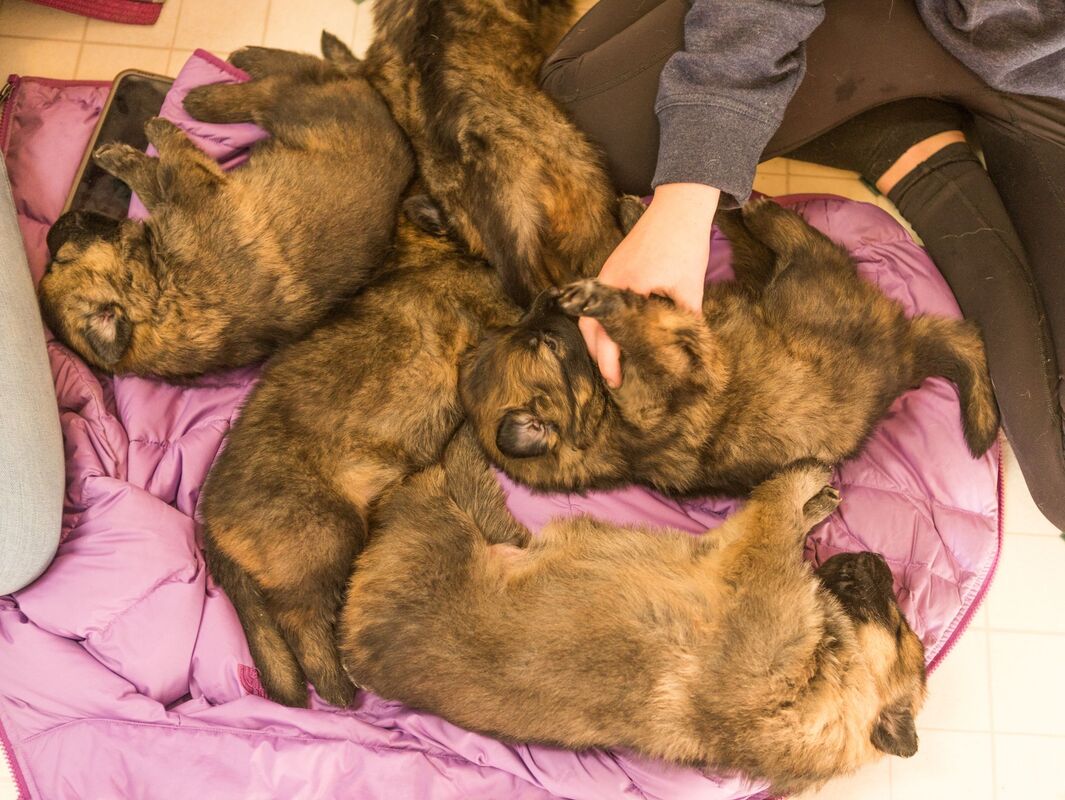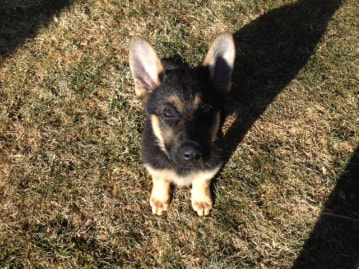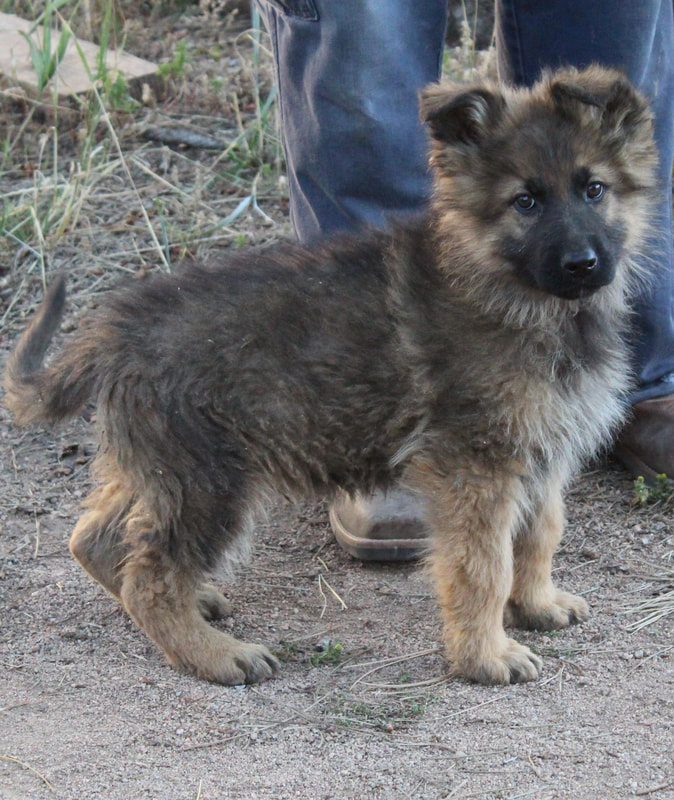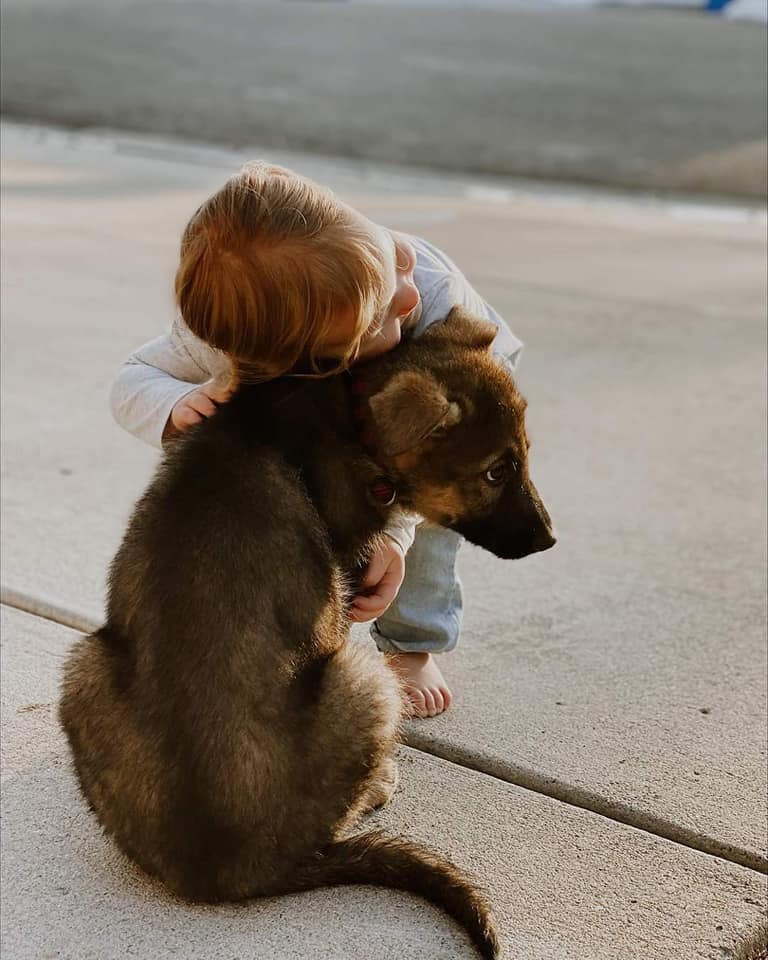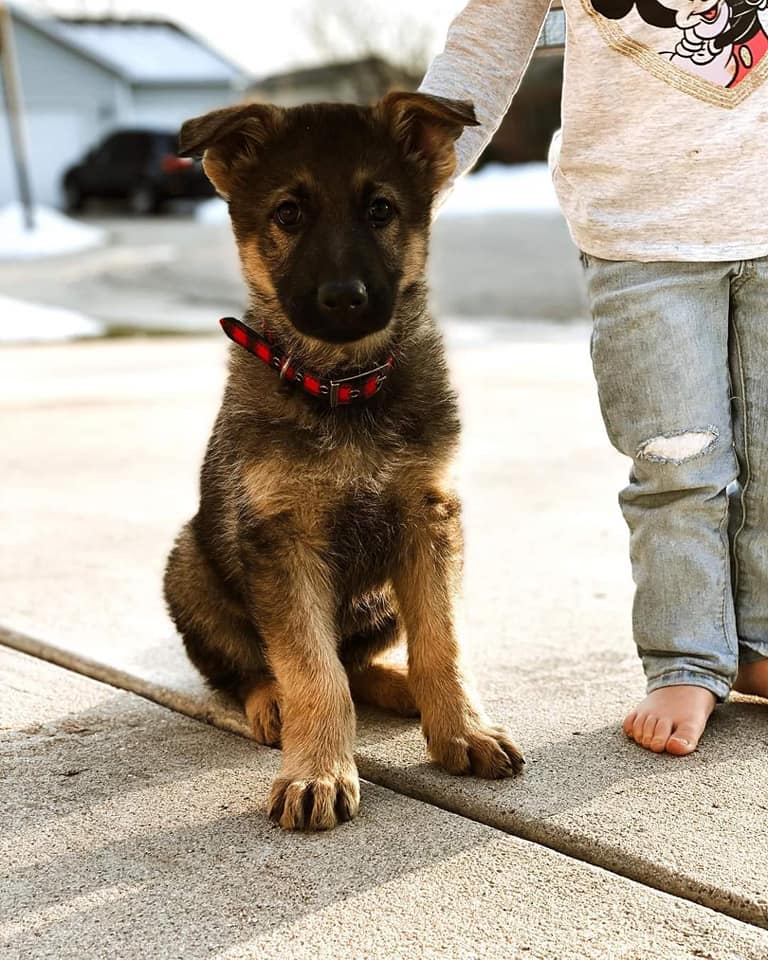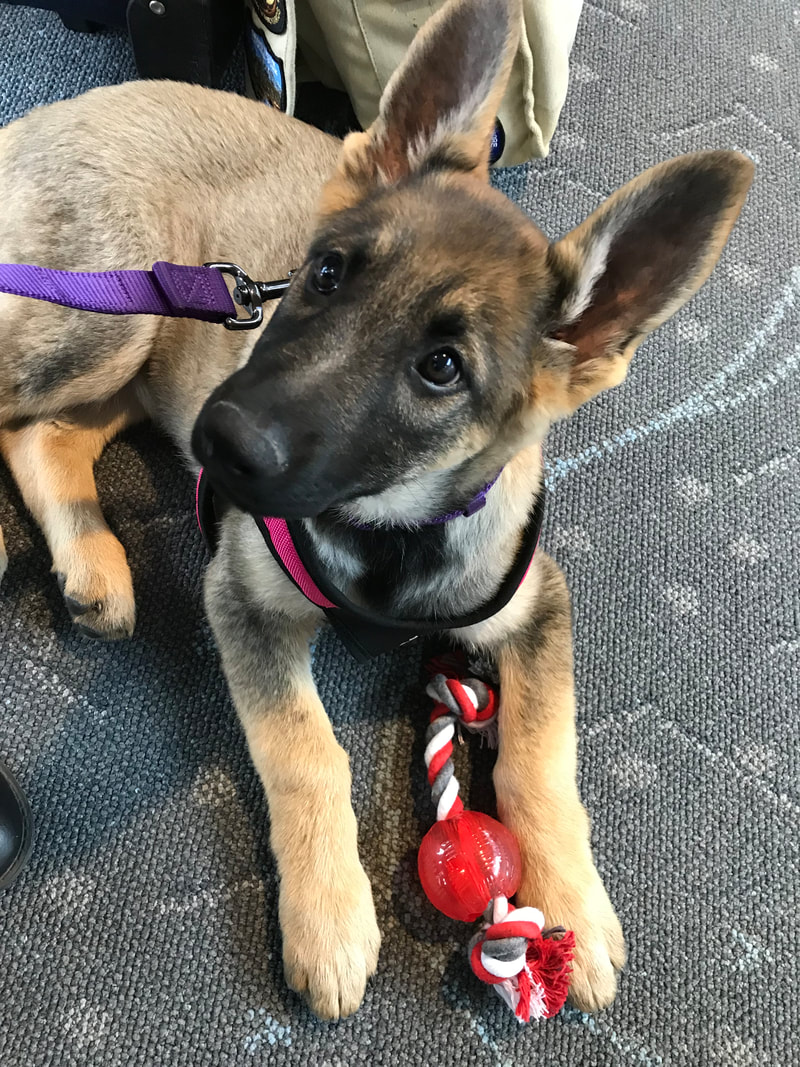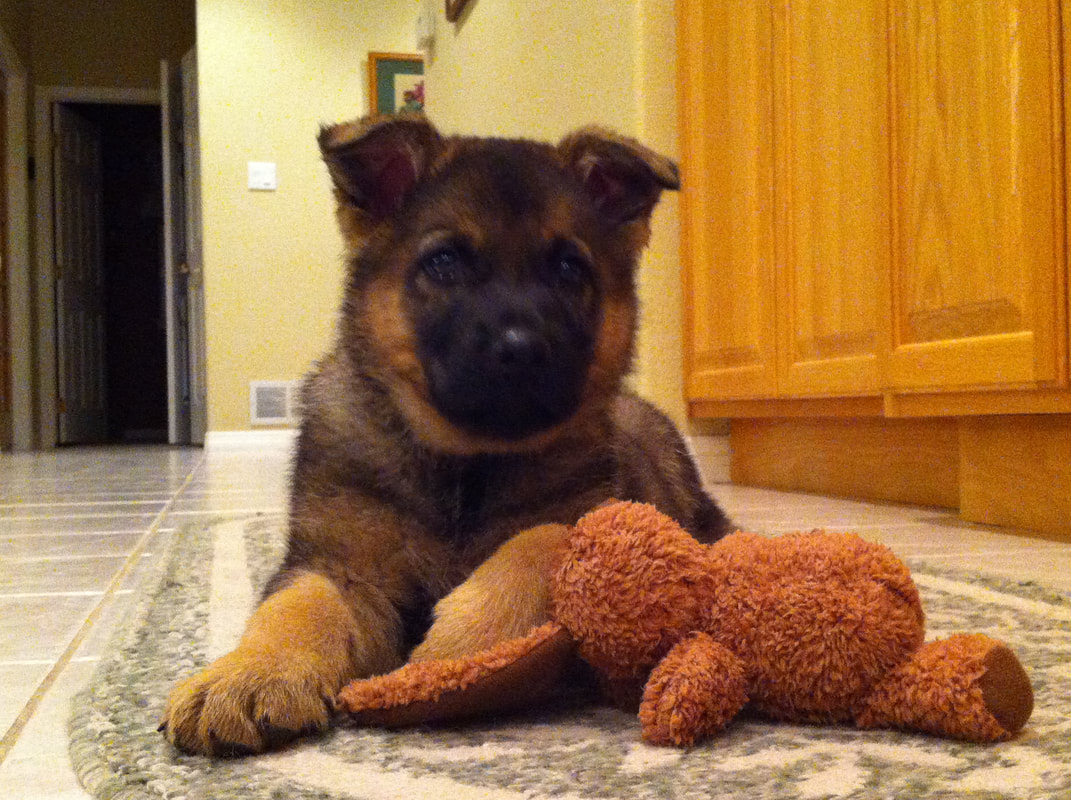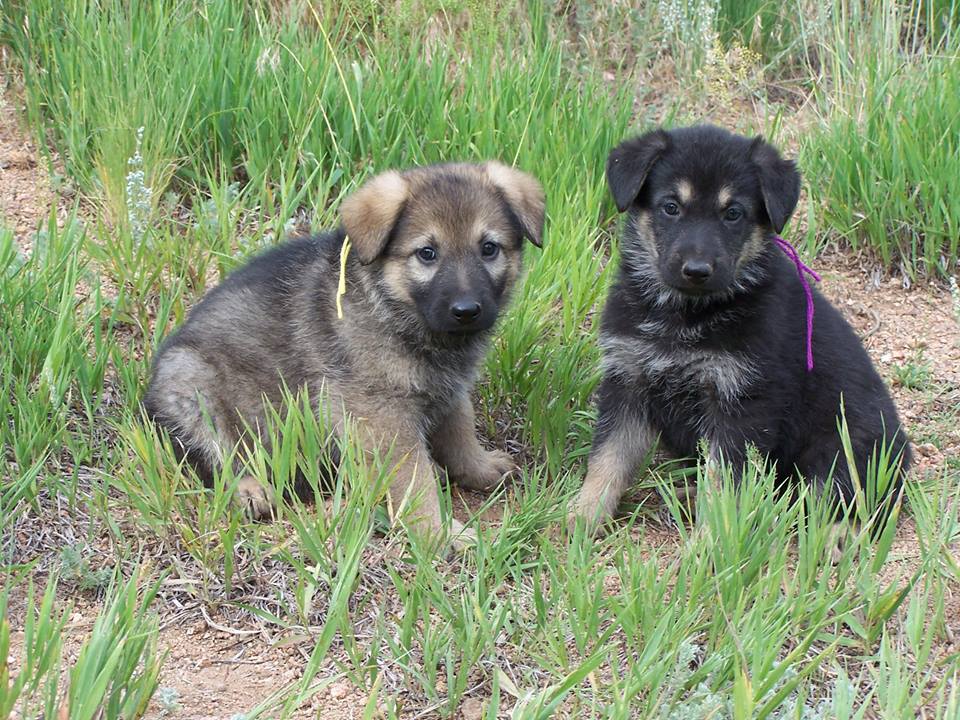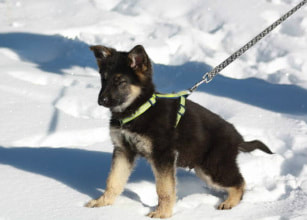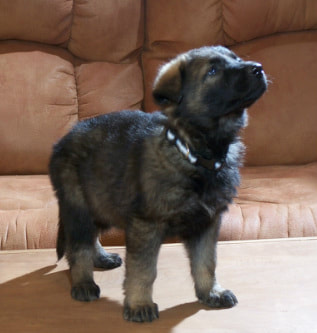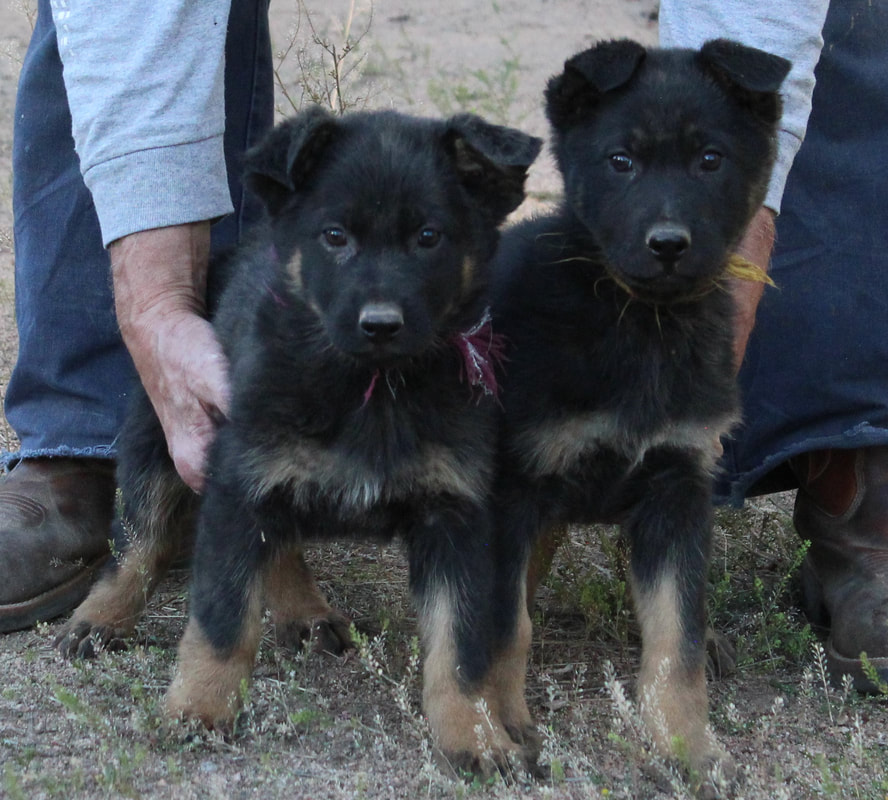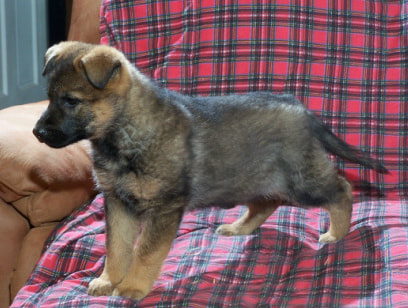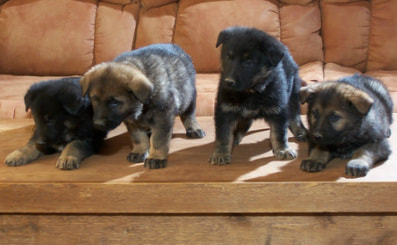Protection plus Love!!!
To reserve your new puppy, please call:
719-748-1456, 719-930-7081, or 719-465-7030.
Puppy availability can be checked by calling us!
We are expecting puppies in 2025.
We are happy to discuss the puppies who are available, expected, and planned!
Appointments are made so you can come meet puppies and parents.
Our puppies are working line, straight backed German Shepherds that have been vet checked, micro chipped, and shots and worming have been started. All pups come with AKC registration, hip and health guarantees, and all are DNA tested/clear of DM!
Puppy prices are between:
$2100.00 to pet homes AKC Registration.
$5,500.00 to breeder homes Breeder AKC Registration.
A check or card# to the AKC for $56.99+, to cover AKC registration, and microchip registration to your name will be required upon pickup of your puppy.
Please call for more info or to schedule an appointment to come out and see them.
We are taking deposits for expected litters and future breedings.
Luna/Judah babies! born 3/4/2025
One black and tan female is available. ready now! She is priced at $2400.00.
Beautiful, bi color short coat with black markings on toes and legs. She is a happy healthy girl and is ready for her forever home.
One black and tan female is available. ready now! She is priced at $2400.00.
Beautiful, bi color short coat with black markings on toes and legs. She is a happy healthy girl and is ready for her forever home.
Shabach/Judah litter born 4/12/2025.
We have 1 female puppy available, not sure which pup it will be yet, either black or dark black and tan.
We have 1 female puppy available, not sure which pup it will be yet, either black or dark black and tan.
Yadah/Samson Litter expected June 2nd, 2025. We are taking deposits for this litter now.
I expect all these pups to be short coat sables.
I expect all these pups to be short coat sables.
A few of our previous puppies pictures!
Retired, Adoption/Foster girl, Maya and her family with the Maya's first new babies.
Housebreaking: Supervise your puppy Don’t give your puppy an opportunity to soil in the house; keep an eye on them whenever they’re indoors.
Tether your puppy to you or a nearby piece of furniture with a six-foot leash if you are not actively potty training or playing. Watch for signs that your puppy needs to go out. Some signs are obvious, such as barking or scratching at the door, squatting, restlessness, sniffing around or circling. When you see these signs, immediately grab the leash and take them outside to their bathroom spot. If they eliminate, praise them and reward with a treat.
Keep your puppy on leash in the yard. During the housebreaking process, your yard should be treated like any other room in your house. Give your puppy some freedom in the house and yard only after they become reliably house trained.
When you’re unable to watch your puppy at all times, restrict them to an area small enough that they won’t want to eliminate there.
Browse Dog Crates on Amazon.com
See Cleo Below:
Tether your puppy to you or a nearby piece of furniture with a six-foot leash if you are not actively potty training or playing. Watch for signs that your puppy needs to go out. Some signs are obvious, such as barking or scratching at the door, squatting, restlessness, sniffing around or circling. When you see these signs, immediately grab the leash and take them outside to their bathroom spot. If they eliminate, praise them and reward with a treat.
Keep your puppy on leash in the yard. During the housebreaking process, your yard should be treated like any other room in your house. Give your puppy some freedom in the house and yard only after they become reliably house trained.
When you’re unable to watch your puppy at all times, restrict them to an area small enough that they won’t want to eliminate there.
Browse Dog Crates on Amazon.com
- The space should be big enough to comfortably stand, lie down and turn around. You can use a portion of a bathroom or laundry room blocked off with baby gates.
- Or you may want to crate train your puppy. (Be sure to learn how to use a crate humanely as a method of confinement.) If your puppy has spent several hours in confinement, you’ll need to take them directly to their bathroom spot as soon as you return.
- Without a lot of drama, immediately take them to their outside bathroom spot. Praise your pup and give a treat if they finish there.
- Don’t punish your puppy for eliminating in the house. If you find a soiled area, just clean it up. Rubbing your puppy’s nose in it, taking them to the spot and scolding them or any other punishment will only make them afraid of you or afraid to eliminate in your presence. Punishment will do more harm than good.
- Clean the soiled area thoroughly. Puppies are highly motivated to continue soiling in areas that smell like urine or feces.
See Cleo Below:
|
Cleo:If you know me then you know that I can’t let too much time pass without bragging on my girl, Cleo.
The day I picked up Cleo at seven and a half weeks old from the breeder, she took a pee outside before I loaded her in my truck. I built this outdoor litter box for her at home after doing some research prior to picking her up. After that hour and half ride home, I immediately took her out of the crate in the truck and took her to this litter box where she did both one and two. From that day forward, that’s the only place at home that she would do her business. It’s always made cleanup super easy and I don’t have to go hunting for land mines. Fast forward that training to two years later out here on the road, and I don’t have to hunt for land mines here either. When we get to a location, Cleo will take a little time to scout things out until she finds her “spot”. Then, for the duration that we’re there, she will only go potty in that one spot. So I don’t have to follower her around on a leash or with a poopy bag. I just wait till the day we leave, put on a pair of rubber gloves, grab a trash bag, and go to that one spot to clean up after her. Again, super convenient. That’s yet another reason why I like camping on BLM property vs. a campground. Campgrounds do require a little more supervision. Anyway, just a little praise to my girl. There’s not much more satisfying than a well-trained dog. |
Signs Of Heat:
Pay Attention to the Signs
Paying attention to the symptoms when your dog goes in heat will allow you to prepare for puppies or prevent mating from taking place. Understanding and timing the cycle is imperative if you have a dog that hasn’t been spayed.
Look for swelling of the vulva. Your dog’s vulva is located directly below her anus. Before your dog goes into heat, her vulva will start to swell slightly. When she is in full heat, her vulva will swell to three times its normal size and will take on a reddish color.
Notice any vaginal bleeding. Vaginal bleeding is a sign that your dog will soon be going into heat. When your dog goes into heat, the amount of blood will decrease quite a bit and the blood will become brownish in color.
Take note if your dog starts acting strangely. dogs who are in the early stages of heat tend to develop behaviors that they do not typically display. In particular, female dogs who are about to go into heat are usually nervous, agitated, or easily irritated.[4]
Notice an increase in verbal communication and agitation. If you own one male dog and a female dog that you think may be in heat, pay attention to how the male dog reacts to being kept apart from the female dog. If he seems more agitated than normal and whines frequently, he is most likely verbalizing his irritation and not being allowed near the female dog. This is a good indicator that your dog is in heat.
Pay Attention to the Signs
Paying attention to the symptoms when your dog goes in heat will allow you to prepare for puppies or prevent mating from taking place. Understanding and timing the cycle is imperative if you have a dog that hasn’t been spayed.
Look for swelling of the vulva. Your dog’s vulva is located directly below her anus. Before your dog goes into heat, her vulva will start to swell slightly. When she is in full heat, her vulva will swell to three times its normal size and will take on a reddish color.
Notice any vaginal bleeding. Vaginal bleeding is a sign that your dog will soon be going into heat. When your dog goes into heat, the amount of blood will decrease quite a bit and the blood will become brownish in color.
- If a dog is scrupulously clean and licks away the discharge, it can be tricky to know if a discharge is present or not. A useful tip is to cover her bed with a white sheet or pillowcase. That way when she is asleep you will see blood spots on the white cover.
- If you plan on breeding your dog, write down the day that the bleeding begins. Breeding is best done on the 10th or 11th day after the first day of bleeding and then every other day after that for three days.
Take note if your dog starts acting strangely. dogs who are in the early stages of heat tend to develop behaviors that they do not typically display. In particular, female dogs who are about to go into heat are usually nervous, agitated, or easily irritated.[4]
- Some dogs will also bark more or become more aggressive with people and dogs around them.
- However, dogs can mount legs or each other for behavioral reasons, such as masturbating, dominance, or bizarrely from submissive behavior, so this does not automatically mean a dog in heat.
- You may also elicit this behavior by giving her a vigorous scratch on her rump. If she stiffens her back legs and diverts her tail to one side she is flagging.
- Never insert anything into the dog’s vulva or vagina to test out if she is ready. You can inadvertently cause harm to the delicate, inflamed tissues and cause huge distress to her.
- The only way you can really confirm if a silent heater is in heat is by observing the interactions between male dogs and the female dog in question. Male dogs will detect even low levels of female reproductive hormones, which will arouse their intense interest and attention.
- Be aware that some dogs do “skip” a heat. If they are unwell or their health is below par, or if they have lost weight recently, their body may save its energy and she won’t come into heat when expected. This is nature’s way of saying her body needs all its reserves to look after number one, rather than being in a state of flourishing good health where she could care for puppies.
Notice an increase in verbal communication and agitation. If you own one male dog and a female dog that you think may be in heat, pay attention to how the male dog reacts to being kept apart from the female dog. If he seems more agitated than normal and whines frequently, he is most likely verbalizing his irritation and not being allowed near the female dog. This is a good indicator that your dog is in heat.
- Although this is not foolproof and you need to interpret this in the context of the dog’s physical changes and the male dog’s usual behavior when kept apart from his female pal. Some dogs experience anxiety when separated from a close playmate and this is difficult to differentiate from sexual frustration.
- However, allowing another dog to mount her, can also be a sign of submissive behavior, so once again, you need to interpret the whole picture and ask questions such as is her heat due and how does she normally behave around dogs. Remember, sniffing bottoms is something dogs like to do a lot, at the best of times, just to work out who is who!
- If your male and female dogs don’t normally interact, keep your male dog on a leash when you bring him near your female dog. One or both dogs may become aggressive if they are not familiar with each other.









